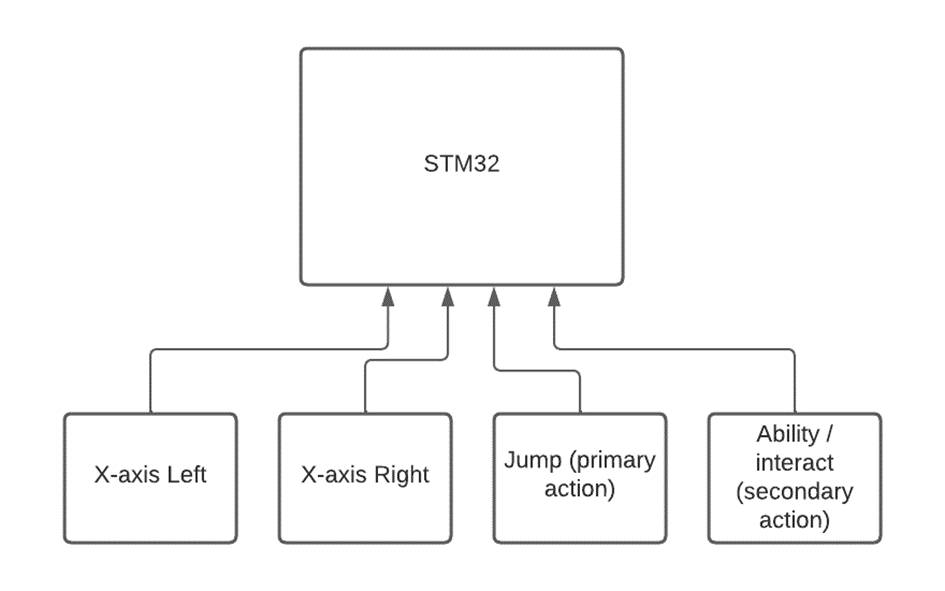diff options
Diffstat (limited to 'docs/architecture.md')
| -rw-r--r-- | docs/architecture.md | 29 |
1 files changed, 29 insertions, 0 deletions
diff --git a/docs/architecture.md b/docs/architecture.md index ea07cdc..055d228 100644 --- a/docs/architecture.md +++ b/docs/architecture.md @@ -10,6 +10,35 @@ Important notes: # Game controllers +## Input +The playable character has 4 actions that it can perform: +- movement on the x-axis (left / right) +- jump +- ability / use +To perform these action there will be 4 buttons for the user to use. + +A joystick is not needed for the movement because the movement is not complex, so button fulfill this. +The layout will be as follows: + + + +## Input handling: +The hardware consist out of a microcontroller and a FPGA. +The microcontroller will process the game logic. +For this reason the input will be handled by the microcontroller as this will improve playability (stated in research). + +The controller will have four buttons, so 4 data pins are needed on the microcontroller plus a ground and 3.3V or 5V pin. +In total there are 6 pins needed. +If the game is going to be played by 2 person, there are 4 more data pins needed so 8 data pins for both controllers. +For data transfer between STM32 and FPHA there are 4 pins needed at maximum (SPI for instance). +The STM32 will be used and most STM32 boards have enough I/O pins for our needs. +The STM32 F030 and F091 provided by AVANS both have 15 digital pins and 6 analog pins. +The buttons will be connected as follows: + + + +To implement the input in the game, the input should be ckecked at the start of each game cycle. In this case there are no interupts needed. + # STM32 software # PPU |